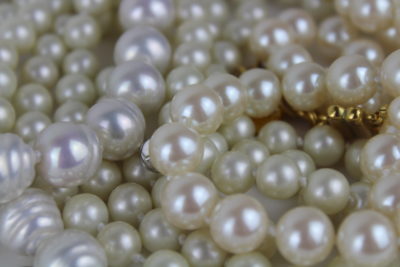
If you have ever looked really closely at a nice pearl, you will see a depth to it. It is somewhat like seeing a person’s soul through their eyes. An exquisite pearl has layers of shine and shimmer that can’t be replicated, like a real diamond versus a man-made diamond.
I have become smitten with pearls of late. Pearl earrings and necklaces are my favorites. Maybe I have watched too many documentaries on Queen Elizabeth and series like The Crown.
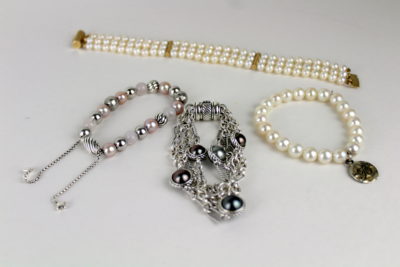
Possibly it is my love of all things vintage that has me eyeing those shimmery orbs. Back in the day of elegance and protocols (probably pre-1970), women refrained from wearing diamond jewelry during the day and instead wore pearls.
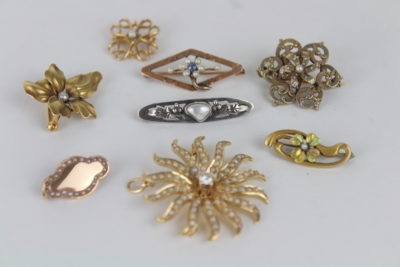
I have tried to learn more about pearls (the pearl equivalent to a diamond’s cut, color, clarity and carat weight), but, to me, it seems a bit trickier. Pearls are usually graded by:
Size in millimeters,
Shape such as baroque or round,
Body color such as cream or white,
Overtone such as pink, blue or green,
Orient which is present or not present,
Luster which is a range such as very good or good to very high or high,
Surface such as clean, lightly spotted and spotted,
Nacre which is judged by thickness, of which thicker is preferred, and
Match if considering a string of pearls, bracelet or earrings.
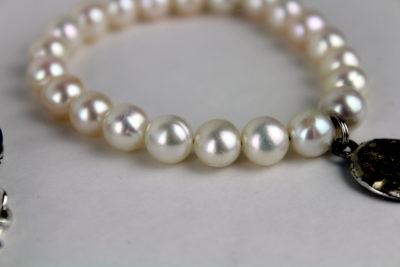
Whereas some of the grading terms are straightforward, I tend to get lost in understanding the orient, luster, surface and nacre. The following is what I have learned…or at least the way I understand them.
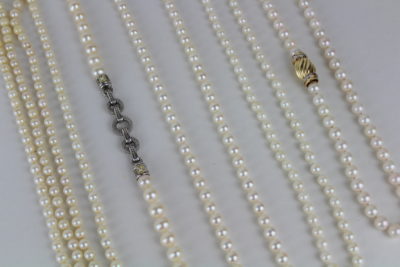
Orient. I really struggle with orient. I probably need to go to a nice jewelry store to see if they can show me the difference. My research has uncovered that it is present in natural pearls and more common in irregular shaped pearls. It has to do with the iridescence of the pearl and is commonly described as the rainbow effect of color.

Nacre is the transparent outer coating of a pearl that builds around the foreign object (such as a grain of sand) that attached to the mollusk shell. Nacre layers build up over time in the shell. The thicker the nacre, the more luster can be seen in the pearl.
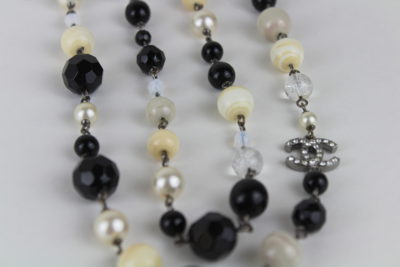
Luster is determined by the nacre. The thicker the nacre, generally the more luster or shine there is to the pearl.
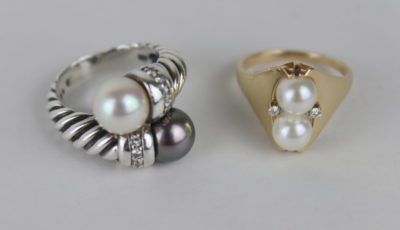
The surface of the pearl may be clean or may have spots, bumps, blemishes, etc. A consistency of the surface texture is preferred. For example, a smooth, clean round pearl or a gently bumped baroque pearl – both are valuable for their shape of pearl.

As you know, I often buy items on eBay or other such websites. What I have paid for pearls varies greatly. It is interesting when I have pearl necklaces laying side by side that it is easy to tell the nicer pearls from the poorer quality ones. The lower end pearls just have a creamy appearance (which indicates their thin nacre), but they do not seem to have the same depth to them as the others. However, when alone the lower end string of pearls looks fine. I bet a real pearl aficionado could tell the difference!
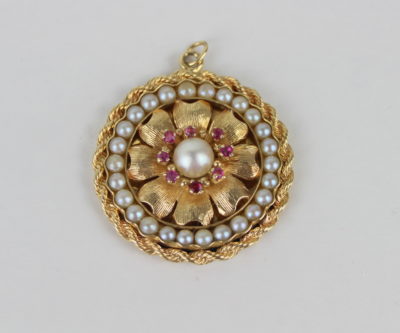
If you plan on buying a good quality set of pearls, you will want to do your research before you make the purchase. There are several guides to grading pearls on the internet. A bit of research beforehand may pay off.
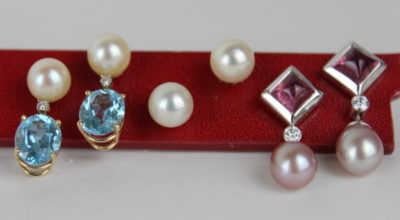
Be careful with your pearls. They need to be kept away from perfumes and lotions. They shouldn’t be cleaned with jewelry cleaner either. It is advisable that they be lightly rubbed with a clean cloth after wearing in order to remove any dirt or oils that collected. Of course, from time to time, they will need to be restrung by your jeweler. At some point I was told that pearls should be the last thing you put on and the first thing you take off, which is good advice for protecting their beauty.
By the quantity of pearl necklaces and other pearl jewelry available for resale on eBay, they do not seem to be poplular right now. But, I am never one to follow trends when it comes to something I love, and I do love pearls!
